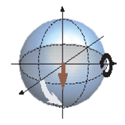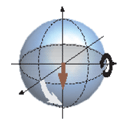Unexpected error
The same lasers that trap, cool, and manipulate atoms or ions to make qubits can cause them to lose coherence. The reason is that when light scatters from an atom, it carries away information about the atom by encoding it in the form of frequency (inelastic scattering, which changes the energy) or phase (elastic scattering, which doesn’t change energy but does disrupt the wave function).
Elastic, or Rayleigh, scattering has mostly been ignored as a source of qubit decoherence or “error,” but in a paper appearing in Physical Review Letters, Hermann Uys, now at the National Laser Centre in Pretoria, South Africa, and colleagues at NIST and JILA in the US and the Weizmann Institute in Israel present new calculations, backed by experiments, that point to cases where this assumption is wrong.
Uys et al. calculate the probability that an atomic qubit, which can be in a high-energy, spin “up” state or a low-energy, spin “down” state, will elastically scatter a photon of a particular frequency, and identify a window of frequencies where the two states’ combined elastic scattering is a significant source of decoherence. As proof of their model, they laser-cool a lattice of beryllium ions that, in a magnetic field, act as spin “up” or “down” qubits. The group prepares the ions in a particular spin state and then exposes them to a tunable laser. This allows them to measure the experimental conditions where elastic scattering of the laser light from the beryllium atoms causes the encoded spin information to be most rapidly lost.
Uys et al.’s new insight will be an important addition to the checklist of error sources in quantum information experiments with trapped atoms. – Jessica Thomas





